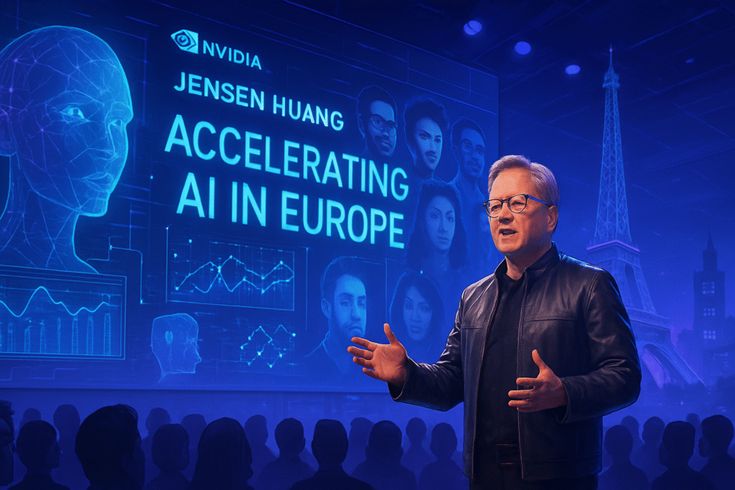You know those CEOs who seem to be everywhere? The ones who aren’t just running a company but are practically defining an entire era of technology? That’s Jensen Huang. With his ever-present black leather jacket, a calm demeanor, and a mind that seems to operate light years ahead of the rest of us, he has spent over three decades building NVIDIA from a small startup into a trillion-dollar powerhouse. It’s a classic story of vision, grit, and making a massive, gutsy bet on an unseen future.
The Humble Beginnings of an Industry Giant
Jensen Huang’s journey is a truly fascinating one. He was born in Taiwan and moved to the United States as a young boy, spending part of his youth at a a school his family thought was a prestigious boarding academy but turned out to be a reform school. It was an experience that no doubt helped him develop a tough, resilient mindset early on. After earning degrees in electrical engineering from Oregon State and Stanford, he cut his teeth at chip companies like AMD. But the real story began in 1993. At just 30 years old, Huang, along with two friends, co-founded NVIDIA in a Denny’s restaurant. The vision? To build graphics chips for the PC gaming market.
Back then, the industry was a lot more scattered and competitive, but Huang had a clear goal. He knew that the future of computing wasn’t just about making one task faster; it was about doing a million things at once. This idea of parallel processing was the core of their plan. While others were focused on making general-purpose CPUs, NVIDIA was laser-focused on the GPU.

The Bold Pivot from Gaming to Everything Else
For years, NVIDIA dominated the world of PC gaming with its GeForce line of graphics cards. Gamers couldn’t get enough of the realistic graphics and smooth performance their chips delivered. But while the world saw a company making great chips for games, Jensen Huang saw something else entirely. He and his team realized that the very same architecture that rendered stunning virtual worlds could be used for something far bigger. The ability of a GPU to perform thousands of parallel calculations simultaneously was the perfect match for the data-intensive work of machine learning and artificial intelligence.
This wasn’t a small tweak to the business; it was a total revolution. In 2006, NVIDIA launched CUDA, a software platform that allowed developers to use their GPUs for general-purpose computing. The decision to invest in this software, and essentially give developers the keys to the GPU’s power, was a defining moment. It was a massive financial risk, but it paid off in spectacular fashion. NVIDIA’s hardware and software became the standard for anyone working in AI. Their chips now power everything from self-driving cars to the large language models that are changing the way we interact with technology.
Just as Michael Saylor’s unwavering conviction in Bitcoin reshaped his company’s financial strategy, Jensen Huang’s early belief in the power of parallel computing redefined not only NVIDIA’s future but also the entire field of technology. While Saylor bet on a new kind of money, Huang placed his bet on a new kind of computing, and both have proven to be incredible visionaries in their own right.
The Man in the Leather Jacket
What’s really special about Jensen Huang is his approach to leadership. He’s not just a brilliant engineer; he’s a charismatic visionary who communicates with remarkable clarity. He’s known for his straightforward, long-term perspective and for his belief in the power of learning and curiosity. He often talks about the “new computing era” and how every company and nation needs a strategy for AI. In a fast-moving world, his consistent vision and focus on the future have turned NVIDIA into a company with an almost unbelievable market cap, showing just how valuable his foresight has been.
Huang’s legacy is a testament to thinking differently. He didn’t just build a better chip; he built a new category of computing that has, in turn, created countless new industries. And as the world continues its rapid shift towards AI, it’s clear that the man in the leather jacket will be a central figure for years to come.




